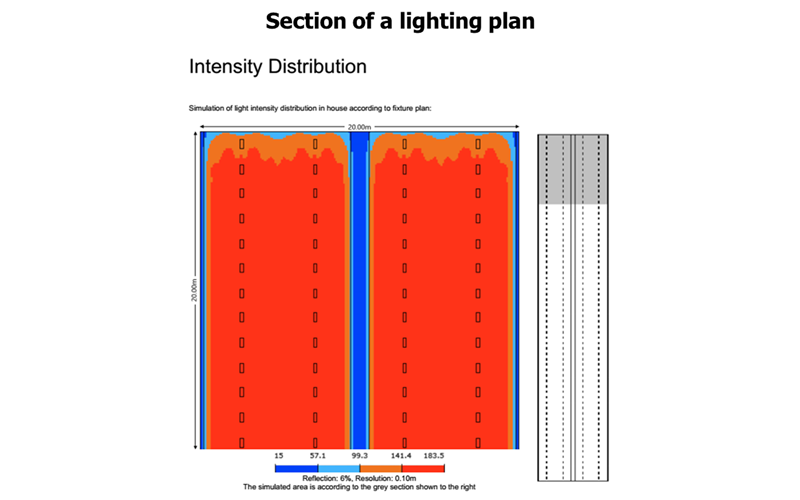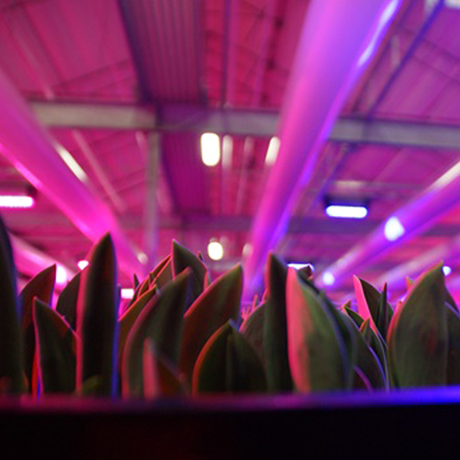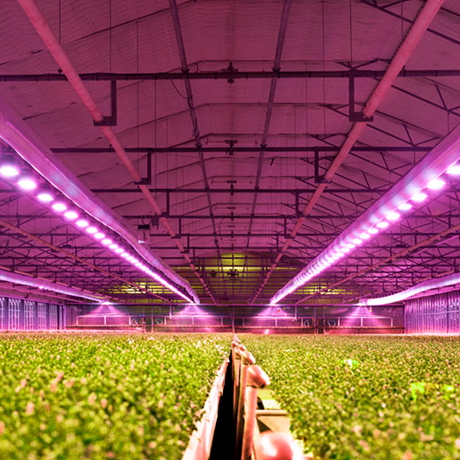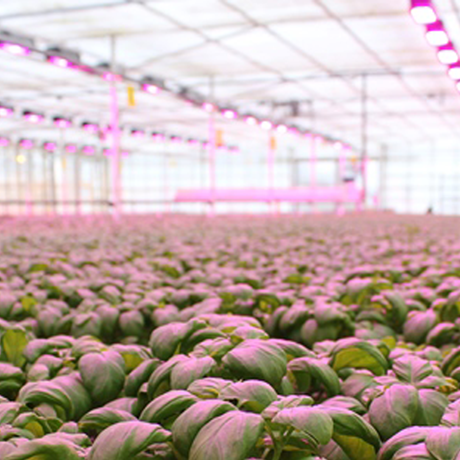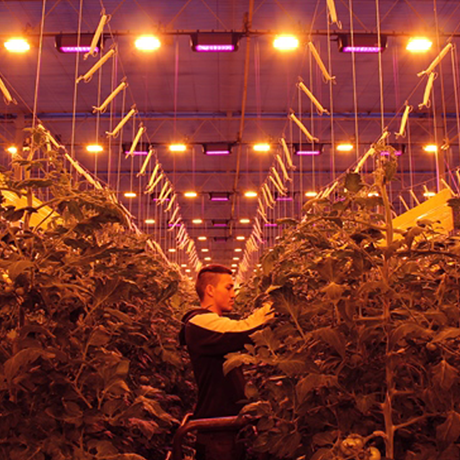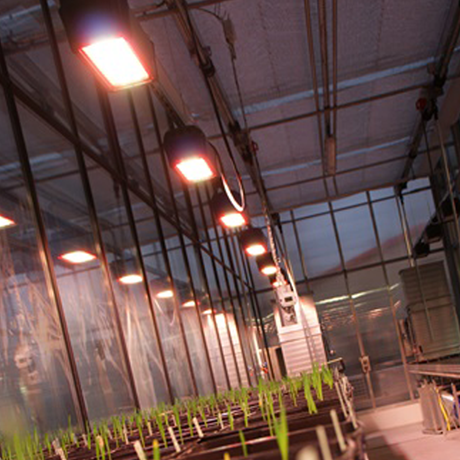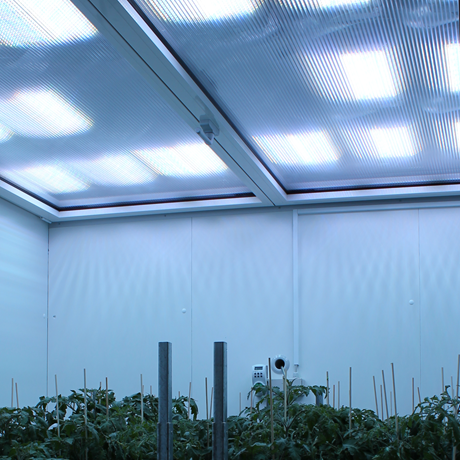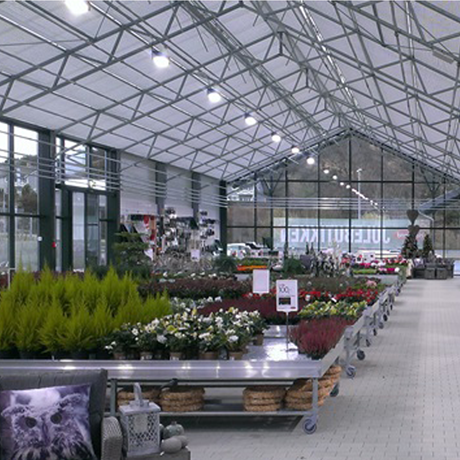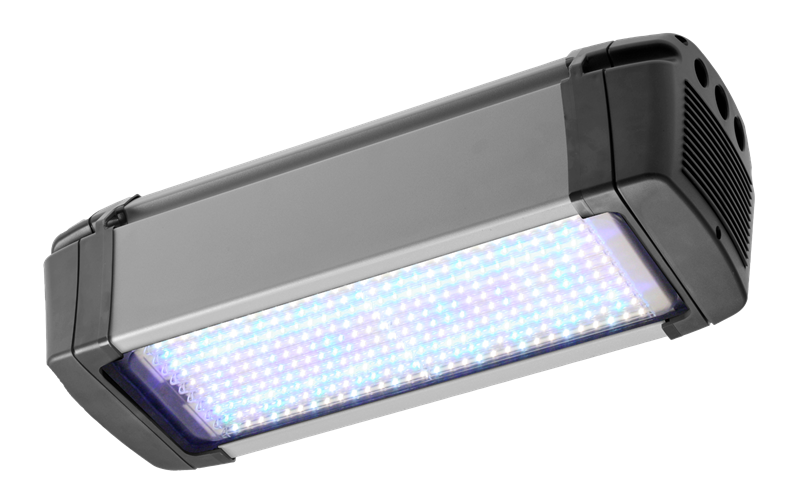
FL300 Sunlight
The controllable LED fixture replicating the sunlight
When evaluating possible LED solutions, it is important to check two parameters: Temperature of the LED when the fixture is running and the distribution profle on your plants. The FL300 Sunlight is equipped with a patented active cooling system that enables a low LED temperature and therefore a long lifetime that a passive cooled LED fxture does not have.
The FL300 Sunlight is designed with a patent pending optical lens system that enables a traditional installation plan similar to HPS with homogenous distribution profle on plant level.
Controllable
The light spectrum can be designed for individual crops in combination with LCC4 climate control systems. An alternative to the LCC4 climate control system is a small Control Unit which controls up to 49 fixtures. A further alternative is the LED Light Controller, which can be connected with your climate computer from another provider. That way you can maintain the full control of your LED installation.
FL300 Sunlight is CE marked according to standards in horticultural lighting and ROHS compliant.
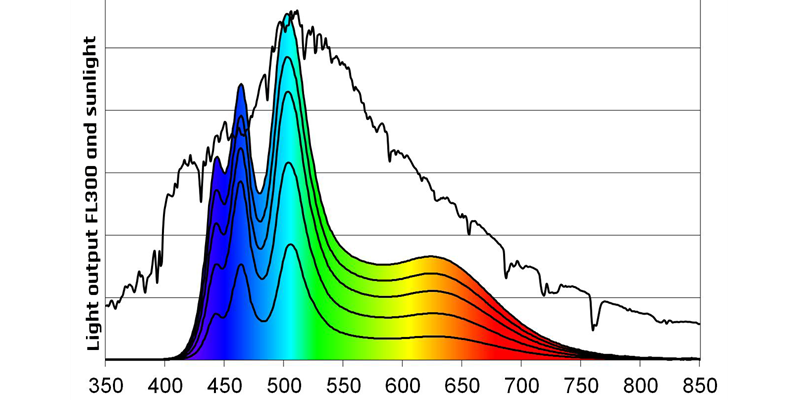
Spectral distribution
The picture shows the spectral distribution of FL300 Sunlight together with a spectral profile of sunlight.
What's in it for you? ...... see below
LED cases
Below you will find cases telling about how the LED fixtures work for the horticulture life
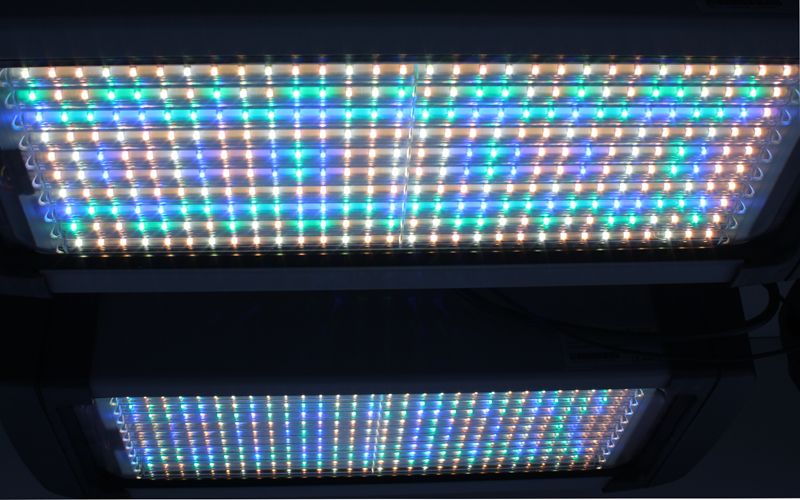
Documented results
The research institution of Aarhus University is well known in Europe for experiments in plant responses, including trials with LED lights. After evaluating several LED solutions, they installed FL300 Sunlight in their new climate chambers situated at the Aarslev Research Station. Each 4.2 m2 cell was equipped with 16 FL300 fxtures installed with dynamic control. The installation was completed in the fourth quarter of 2012 and has proven itself on various crops ranging from tomatoes to various grains.
Together with the substantial energy savings – both in terms of light efciency and reduced cooling – the installation provides a uniformity of light which is greatly improved, when compared to what is achievable with traditional lighting technology.
The conclusion was that despite the low electricity consumption, the plants are growing very well in the “new
light”. Getting a tomato plant to flower under LED lighting alone is difcult – and this is no longer an issue with the FL300 Sunlight.


